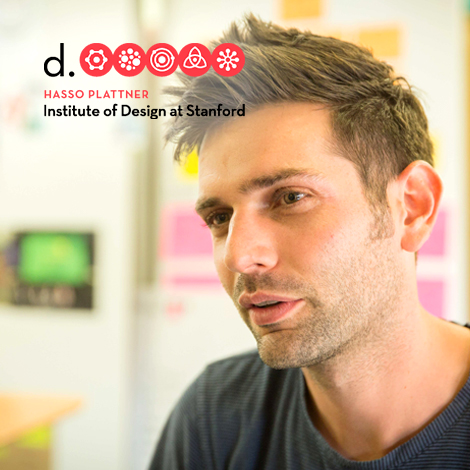S04 : Ep. 18 : Design Thinking in the Future of Work & Education featuring Ariel Raz

Design thinking - It is the No. 1 transferrable skill for more than 85% of careers in 2030. This episode features one of the leading minds in design thinking, Ariel Raz - Head of Learning Collaborations at Stanford dsSchool. Coming from a non-design background, but with a unique experience in the education sector, Ariel goes on to discuss a unique perspective on design thinking and its details. He insightfully discusses detailed answers and resources for questions such as What is the evolution of Design Thinking?, What are the key values of design thinking? How is this skill positioned for the future of work & future of education? How does design thinking work alongside key technologies? Armed with a unique perspective in education and design thinking, Ariel goes on to humbly share valuable advice for educators as well as amazing life advice integrating design thinking. Tune into this video episode and learn more about the most sought-after skill set, globally.
__________________________________________________________________________
About the Guest: Ariel Raz
Two days before launching a falafel truck with his best friend, Ariel hastily chose to join Teach for America and left his life in the Bay Area for adventures in the Bayou State. With dreams of working in the food industry put on pause, he turned his attention to teaching math to a rambunctious crew of middle schoolers in St. Bernard Parish. They taught him Zydeco dance moves and how to eat crawfish; he taught them fractions and algebra using a game or two.
The Bayou adventure led Ariel to Chicago, where he helped open a charter school in the South Side. Equipped with more chromebooks and iPads than hands to carry them, Ariel was curious to come up with ways to get the most out of the latest and greatest technological tools. That led him to the Stanford School of Education, where he studied Learning, Design & Technology. While there he develop a project called iCanGo, a story building tool for parents of children who are on the Autism spectrum.
Through an internship with the K12 Lab Network, Ariel’s was inspired to explore the intersection of design thinking in K12 education. As a Head of Learning Collaborations for the K12 wing in the Stanford d.school, he now spends countless hours dreaming up ways to inspire new teachers.
Ariel Raz designs learning experiences that inspire educators to engage in creative work. He currently works as Head of Learning Collaborations at Stanford University’s d.school and holds the title of lecturer at the School of Engineering. In the past he wore a number of hats in the realm of education, from college tutor to Teach for America classroom teacher to school founder at KIPP Bloom, a middle school in the Chicago Southside. Ariel holds a BA in Film & Rhetoric from UC Berkeley and an MA in Learning, Design & Technology from Stanford University.
__________________________________________________________________________
About Stanford d.School – Visit Website
The d.school's mission is to help people unlock their creative abilities and apply them to the world. It reflects our foundational belief that design should be accessible to all, and that everyone is creative.
We believe design can help create the world we wish for. Design can activate us as creators and change the way we see ourselves and others. Design is filled with optimism, hope, and the joy that comes from making things change by making things real. We believe that diversity leads to better design, and opens up a greater range of creative possibilities.
The nature of design affords people the opportunity and privilege to shape the world that they-and others-inhabit. This is power. In a just world, that power is shared, prioritizing the voices and ideas of people most impacted by the intended and unintended effects of new designs. We aim to actively confront and challenge the mindset that design can only be used by a privileged few.
Given our ideals, we have work to do.
__________________________________________________________________________
Resources
- K12Lab: Click Here
- K12 Lab Network: Click Here
- Creative Acts for Curious People: Click Here
- school resources: Click Here














